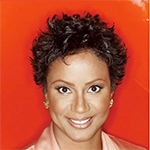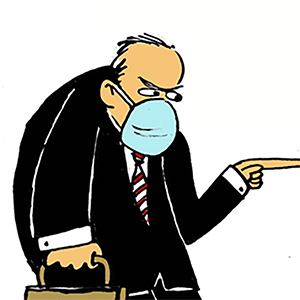The Overlooked Importance of Living Color
The world we live in is filled with so many colors. Yet have you ever stopped for a moment to consider how just the experience of being exposed to these colors may be subconsciously impacting your mood, perception and maybe even your diet? There is now a field of scientific study called color psychology dedicated to exploring just how the colors we are exposed to might have a far greater influence on our life than you or I realize.
As a 2023 Science of People report puts it, "if you walk into a room or open a webpage, your brain will process the colors before any words or shapes. We are walking through a world of color, receiving a constant subconscious stream of emotional signals and information." As described by WebMD, "every color on the visible light spectrum has a unique wavelength and vibration. These wavelengths produce electrical impulses or fields of energy that affect the human body."
Science of People's Mike Mantell reports that there is currently "a branch of healing called chromotherapy, also known as color therapy," exploring how just "being in the presence of particular colors can improve our mental and physiological health. ... Color therapy can work even if your eyes are shut, as the colored light wavelengths can impact you through your skin. "One such example of this phenomenon is the use of blue-green lights on the skin of babies with pre-natal jaundice, which helps purify the baby's blood and heal their jaundice. ... Color therapy has also proven effective in helping with insomnia, diabetes, hyperacidity, psychiatric illnesses, dengue fever, hypertension, seasonal affective disorder (SAD), immunity, cutaneous wound healing, chronic joint disorders, and inflammation."
As Melanie Davis-McAfee reminds us in an Interesting Facts report, "using specific colors to promote mental wellness has been in practice since around 2000 BCE. Ancient civilizations in Egypt, Greece, China, and India dabbled in primitive chromotherapy to treat various physical and mental ailments ... everything from general aches to fertility issues to nosebleeds.
"Ancient Egyptians and Greeks took their chromotherapy one step further by introducing elements of phototherapy. These civilizations built 'healing temples' where sunlight shone through jewels or gemstones such as rubies and sapphires to cast a different colored light in the temple's many rooms. Practitioners would then place patients in a specific colored room depending on the ailment they were looking to cure."
So "what colors your world?" another WebMD report asks. "Before you redecorate, get dressed, or serve your next meal, it might be good to keep that in mind. ... That may help you have a happier view of your life and a healthier state of mind."
According to WebMD, colors you are exposed to can affect your energy level. "You may be happier and less tired after you exercise around the color green," the report advises. "It makes sense then that people who exercise outside, where there's more green, feel better. And having more 'green space' where you live tends to boost your mental health."
As further testament to the power of the color green, the Science of People reports that in a recent study, "Dr. Padma Gulur of Duke University gave different colored eyeglasses to patients undergoing extreme pain -- the glasses were clear, blue, and green. The clear and blue glasses did not affect the patient's recovery. And while the green glasses didn't reduce the patient's pain, they were four times more likely to reduce anxiety in the patients. Most patients who wore the green eyeglasses for the experiment asked to keep them! If you struggle with anxiety, especially as it relates to physical pain, consider incorporating green into your life."
Studies have also found that the color of your plate can affect how much you eat. "The key is contrast," WebMD reports. "The more different the color of the plate from the color of the food that's on it, the less you'll serve yourself. In one study, people served themselves about 30% more fettuccini alfredo if they were given white plates instead of red." In addition, studies have found that "children seem to eat more if there are different colors on their plates. One way to try to get your kid to eat more fruits and vegetables might be to come up with some vivid color combos. As a bonus, different colors often mean a larger variety of nutrients, and that's good for growing bodies."
Science of People says that a "color impacts you based on a combination of three things: The innate psychology of that color shared across cultures ... your personal connection to colors," and "the cultural associations of that color. For example, in America, green often means luck, whereas in China, wearing a 'green hat' implies infidelity."
In trying to apply color psychology to your life, "knowing the essential quality of each color can be a great start," Mantell writes. For example, red "is the color of aggression and passion," but "seeing red also increases your strength, metabolism, and blood pressure, which is why it's used for stop signs and fire engines.
"There is no exact science for each color, but we can make some guesses based on human universals," Mantell continues. Yellow is "the color of the sun" and is considered "the happiest of all colors." It stimulates "joy and optimism. Yellow also grabs attention, which makes it great for traffic signs."
Green "denotes freshness, safety, and harmony. Green is restful on the eyes and produces the least amount of eyestrain," while brown "conjures up feelings of strength and stability." At the same time, "brown can seem boring and safe." According to Mantell, "orange is also not a crowd favorite and is most commonly marked as people's least favorite color."
While black is considered a "power color (that) can convey feelings of mystery and seriousness," it "is also associated with sadness and solemnity. ... Sports teams that wear black receive the most penalties due to how the referees perceive them and how they perceive themselves," notes Mantell.
Follow Chuck Norris through his official social media sites, on Twitter @chucknorris and Facebook's "Official Chuck Norris Page." He blogs at http://chucknorrisnews.blogspot.com. To find out more about Chuck Norris and read features by other Creators Syndicate writers and cartoonists, visit the Creators Syndicate webpage at www.creators.com.
----
Copyright 2024 Creators Syndicate, Inc.























Comments